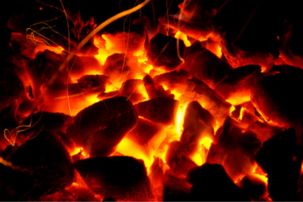Lesson summary
In this activity students work in groups to create a maps of bushfires for regions around Australia. Students incorporate major bushfire events from history into their maps, and also look at how climate change might affect bushfire frequency and intensity in the future. Students are asked to create interactive maps about their research and to share these with the class.
Learning intentions:
Students will...
- recognise that bushfires can be a natural part of the Australian landscape.
- recognise that bushfires are caused by a range of factors.
- understand that some parts of Australia are more susceptible to bushfires than others.
- recognise that climate change will contribute to the frequency and intensity of bushfires in Australia.
Lesson guides and printables
Lesson details
Curriculum Mapping
Australian Curriculum content descriptions:
Year 5 Geography:
- The impact of bushfires or floods on environments and communities, and how people can respond (ACHASSK114)
- Organise and represent data in a range of formats including tables, graphs and large- and small-scale maps, using discipline-appropriate conventions (ACHASSI096)
- Present ideas, findings, viewpoints and conclusions in a range of texts and modes that incorporate source materials, digital and non-digital representations and discipline-specific terms and conventions (ACHASSI105)
- Reflect on learning to propose personal and/or collective action in response to an issue or challenge, and predict the probable effects (ACHASSI104)
Year 6 Science:
- Sudden geological changes or extreme weather conditions can affect Earth’s surface (ACSSU096)
- Science involves testing predictions by gathering data and using evidence to develop explanations of events and phenomena (ACSHE098)
- Scientific knowledge is used to inform personal and community decisions (ACSHE220)
- Construct and use a range of representations, including tables and graphs, to represent and describe observations, patterns or relationships in data using digital technologies as appropriate (ACSIS107)
- Communicate ideas, explanations and processes in a variety of ways, including multi-modal texts (ACSIS110)
Year 6 Geography:
- Organise and represent data in a range of formats including tables, graphs and large- and small-scale maps, using discipline-appropriate conventions (ACHASSI124)
- Present ideas, findings, viewpoints and conclusions in a range of texts and modes that incorporate source materials, digital and non-digital representations and discipline-specific terms and conventions (ACHASSI133)
- Reflect on learning to propose personal and/or collective action in response to an issue or challenge, and predict the probable effects (ACHASSI132)
Syllabus Outcomes: GE3-2, GE3-3, GE3-4, ST3-4WS, ST3-6PW, ST3-9ES.
Time required: 60 mins
Level of teacher scaffolding: Medium – facilitate discussion, oversee activity.
Resources required
- Internet access
- Student worksheet
- Materials for making maps.
Additional info
This is an original Cool.org lesson. Facts and figures in these lessons may have changed since this lesson was published. We always endeavour to update our resources in a timely manner, but if you see an error or issue in our resources please get in touch with us.


Welcome back!
Don't have an account yet?
Log in with:
By signing up to Cool.org you consent and agree to Cool's privacy policy to
store, manage and process your personal information. To read more, please see
our privacy policy here(Opens in new tab).
Create your free Cool.org account.
Many of our resources are free, with an option to upgrade to Cool+ for premium content.
Already have an account?
Sign up with:
By signing up to Cool.org you consent and agree to Cool's privacy policy to
store, manage and process your personal information. To read more, please see
our privacy policy here(Opens in new tab).